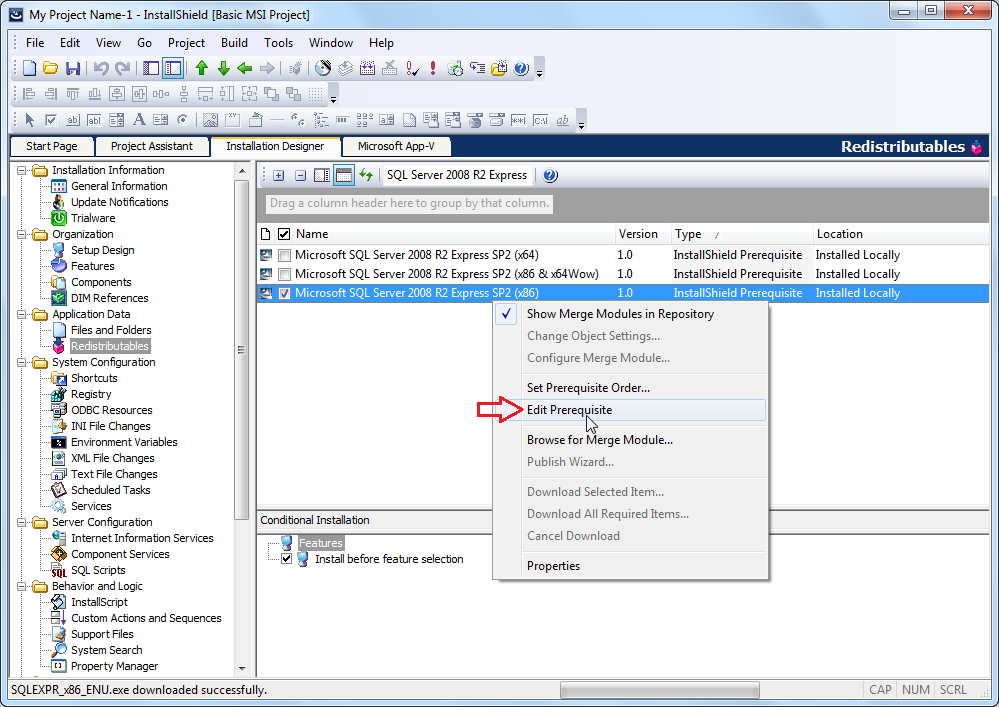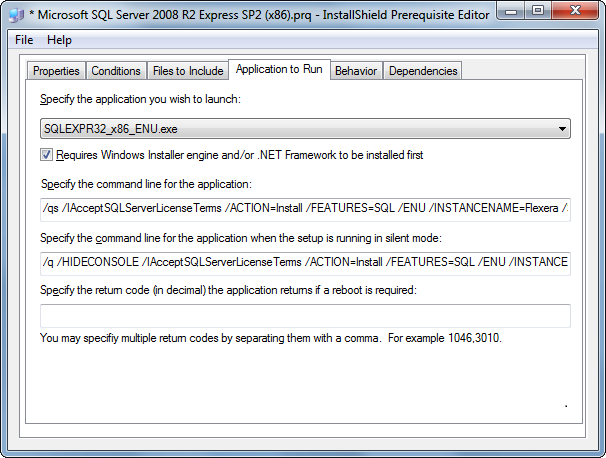This website uses cookies. By clicking Accept, you consent to the use of cookies. Click Here to learn more about how we use cookies.
Turn on suggestions
Auto-suggest helps you quickly narrow down your search results by suggesting possible matches as you type.
- Revenera Community
- :
- InstallShield
- :
- InstallShield Forum
- :
- Microsoft SQL Server 2008 Express R2 (x86)
Subscribe
- Mark Topic as New
- Mark Topic as Read
- Float this Topic for Current User
- Subscribe
- Mute
- Printer Friendly Page
Jun 15, 2015
07:29 PM
Microsoft SQL Server 2008 Express R2 (x86)
We are creating a install package through InstallShield using BASIC MSI
In the Redistributables we have selected Microsoft SQL Server 2008 Express R2 (x86). Does this install have a configuration ini that we can edit to set InstanceName, SecurityMode etc
Appreciate your help
In the Redistributables we have selected Microsoft SQL Server 2008 Express R2 (x86). Does this install have a configuration ini that we can edit to set InstanceName, SecurityMode etc
Appreciate your help
(1) Reply
Jun 16, 2015
12:45 AM
Ian Varcoe wrote:
We are creating a install package through InstallShield using BASIC MSI
In the Redistributables we have selected Microsoft SQL Server 2008 Express R2 (x86). Does this install have a configuration ini that we can edit to set InstanceName, SecurityMode etc
Appreciate your help
No, I do not believe it operates in that fashion. But you can use the Prerequisite Editor to create your own variant of the PRQ that makes use of an INI. You would need to spend a little time researching on Microsoft's website to figure out exactly what command line to feed to the SQL Server 2008 R2 Express SP2 (x86) setup.
Once you've figured out the correct command line options and configuration file settings, you can make your own variant of the Microsoft SQL Server 2008 R2 Express SP2 (x86) PRQ file by right-clicking on it from the Redistributables view and choosing Edit Prerequisite:

This opens the Prerequisite Editor, which is where you can modify the command line options and add additional files (such as a configuration INI) which your command line options can refer to.
